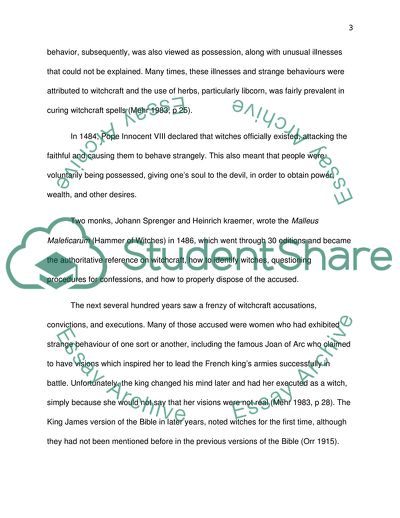Cite this document
(The Female Identity in Witchcraft as Portrayed in Film Essay, n.d.)
The Female Identity in Witchcraft as Portrayed in Film Essay. https://studentshare.org/visual-arts-film-studies/1768406-analyse-the-function-and-meaning-of-witcheswitchcraft-in-relation-to-the-representation-of-female-identityyou-should-refer-to-3-to-4-examples-from-buffy-the-vampire-slayer
The Female Identity in Witchcraft as Portrayed in Film Essay. https://studentshare.org/visual-arts-film-studies/1768406-analyse-the-function-and-meaning-of-witcheswitchcraft-in-relation-to-the-representation-of-female-identityyou-should-refer-to-3-to-4-examples-from-buffy-the-vampire-slayer
(The Female Identity in Witchcraft As Portrayed in Film Essay)
The Female Identity in Witchcraft As Portrayed in Film Essay. https://studentshare.org/visual-arts-film-studies/1768406-analyse-the-function-and-meaning-of-witcheswitchcraft-in-relation-to-the-representation-of-female-identityyou-should-refer-to-3-to-4-examples-from-buffy-the-vampire-slayer.
The Female Identity in Witchcraft As Portrayed in Film Essay. https://studentshare.org/visual-arts-film-studies/1768406-analyse-the-function-and-meaning-of-witcheswitchcraft-in-relation-to-the-representation-of-female-identityyou-should-refer-to-3-to-4-examples-from-buffy-the-vampire-slayer.
“The Female Identity in Witchcraft As Portrayed in Film Essay”. https://studentshare.org/visual-arts-film-studies/1768406-analyse-the-function-and-meaning-of-witcheswitchcraft-in-relation-to-the-representation-of-female-identityyou-should-refer-to-3-to-4-examples-from-buffy-the-vampire-slayer.


